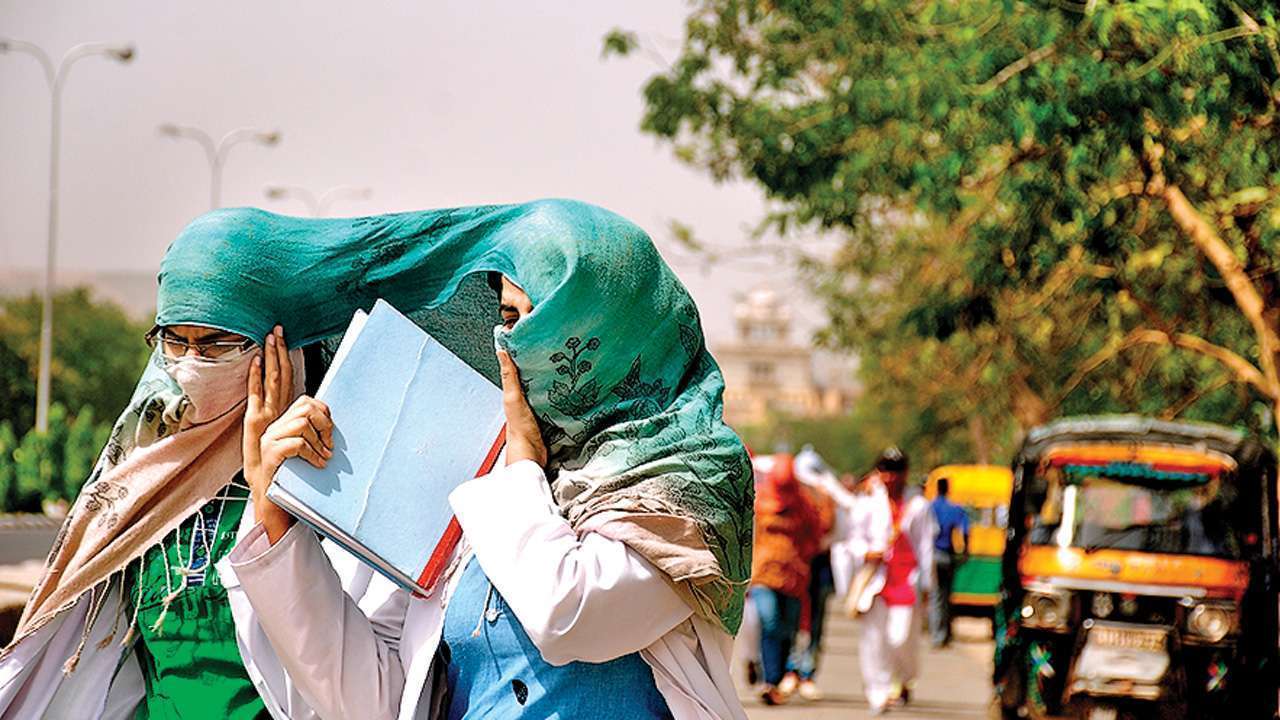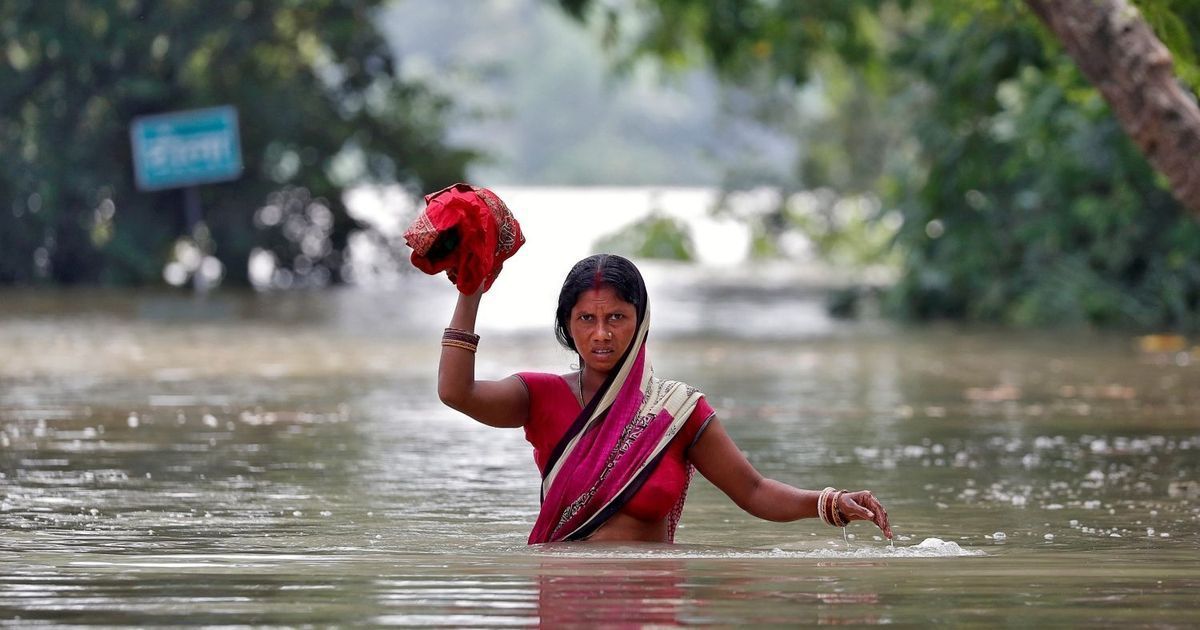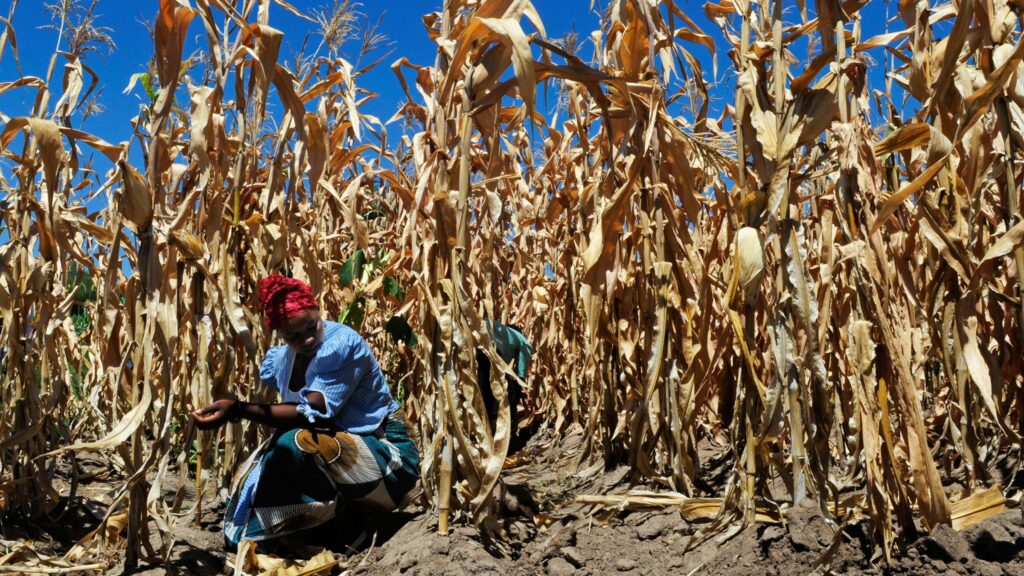How the Jal Jeevan Mission can navigate India’s impending water scarcity
World Water Day was observed across the globe this week. CarbonCopy takes a look at the sustainability of one of the India’s flagship water supply programmes, which is in a race against time to provide 100% water supply to rural India
By Anushka Mohite Mahale / Mar 15, 2021

Pipe dream? India’s plans to provide each household with at least 55 litres of drinking water daily will have to navigate the country’s declining water availability | Photo: India Infra Hub
“Safe and adequate drinking water through individual household tap connections by 2024 to all households in rural India” – this is the ambitious mission statement of the current Indian government’s flagship water management programme, Jal Jeevan Mission (JJM). The scheme is a continuation of the previous government’s National Rural Drinking Water Programme (NRDWP).
With hotly contested elections looming large over several states and a central government fire-fighting on multiple fronts, the water crisis seems to be that one unifying factor that affects a majority of the population irrespective of ‘background’. A 2024 deadline, therefore, maybe ambitious, but is necessary for this government.
The Modi government seems confident of winning the race to provide ‘Har Ghar Jal’ – it claims to have provided tap water to over 3.77 crore rural households since the mission’s launch in August 2019. But just how sustainable is this mission in the long term?
It’s now or never
Central government-funded schemes promising rural water supply are not new in India. A National Water Supply Programme was initiated in 1954 to provide safe drinking water to all villages. Since then, governments over the years have made several attempts to fulfill this promise, including the first National Rural Drinking Water Programme (NRDWP) launched in 1972. But what sets JJM apart from previous attempts is the sense of urgency.
According to the Central Water Statistics 2015, roughly 820 million people in India, living in twelve river basins across the country, have per capita water availability around 1000m3— the official threshold for water scarcity. And the situation seems to be on the precipice of a crisis. As per the 2017 National Commission on Integrated Water Resources Development (NCIWRD) report, India’s average per capita water availability, which currently stands at 1545m3 (2011 assessment), is likely to fall to 1341m3 by 2025 and further to 1141m3 by 2050, putting the country officially on the brink of water scarcity. Availability is one thing, access is another. Latest updates from the Jal Shakti ministry show that over 62% of India’s rural households, or a whopping 117.5 million households, still don’t have piped water connections. Forecasts included in the Composite Water Resources Management report published jointly by NITI Aayog and the Jal Shakti Ministry in August 2019 state that by 2030, India’s demand will outgrow water supply two to one.
When JJM was first launched more than two years ago, Prime Minister Narendra Modi announced ₹3.5 lakh crore will be spent in the next five years. His seriousness to tackle the issue was more than evident in the latest budget, which earmarked ₹50,000 crore for the scheme. Finance minister Nirmala Sitharaman also announced the expansion of the scheme to include urban households.
A scheme that holds water?
A quick glance at the mission’s guidelines shows the government is certainly headed in the right direction. JJM promises to strengthen existing water sources, build new pipelines and retrofit older networks in a bid to provide at least 55 litres of potable water to each person daily. It also promises to set up treatment plants wherever necessary – for example, desalination plants in coastal areas. It promises to provide source sustainability measures in groundwater-rich areas. “This is also perhaps the first time that the government has clearly acknowledged and outlined the threat of climate change to the mission as part of the SWOT analysis,” says Romit Sen, associate director, Water and Agriculture, Institute for Sustainable Communities.
The JJM divides implementation of its objectives across three levels. The first is the Village Action Plan (VAP) to be prepared by the Gram Panchayat and approved by the Gram Sabha. Then comes the District Action Plan (DAP), which combines all the VAPs to prepare its own plan. And the third is the State Action Plan (SAP), which takes into account the DAP and aims to achieve water security across the state by finding ways to discourage the use of tankers and handpumps in villages.
So far so good. But dig a little deeper and the loopholes begin to be unearthed.
Good on paper only?
From a climate adaptation perspective, JJM is definitely much-needed with the increasing number of extreme climate events such as flooding. A recent study by the Council on Energy, Environment and Water (CEEW) found 75% of Indian districts are now extreme climate event hotspots. The study found that in the past 15 years, 79 districts recorded extreme drought events year-on-year, exposing 140.06 million people annually. The yearly average of drought-affected districts increased 13 times in this period. “The programme is definitely a positive from a user point of view,” says Sen.
So why are these schemes not working despite repeated attempts to improve upon them over a span of several years? “JJM itself is not very new,” says Surabhi Singh, research analyst at CEEW. “The arrangement and the delivery mechanism of the previous NRDWP is very similar to JJM (rural). A CAG report on the previous scheme had even flagged some core issues, chief amongst which was – even if we put drinking water mechanisms in place, how do we ensure source sustainability. Another issue that was flagged was operation and maintenance [O&M].”
The implementation method, which includes the VAP, DAP and SAP, had also come into question, Singh says. “This process has not been followed by state governments because it is a very tedious and resource-intensive process, for which most states don’t have the capacity.” This can be seen in the CAG report for the NDRWP, which stated 21 states did not frame water security plans and deficiencies were found in the preparation and scrutiny of Annual Action Plans (AAP).
Another loophole is that in order for the VAPs to remain relevant and effective, they need to be revised on a seasonal or yearly basis, which has not been mentioned in the JJM guidelines, says Singh.
The continued dependence on groundwater-rich regions also is a cause for concern. India is the largest groundwater extractor in the world – around 250 cubic km every year. According to a 2018 report by the Ministry of Water Resources, over extraction is the reason why there was a 61% decline in groundwater between 2007 and 2017. “Instead of depending on groundwater alone, we need to pay equal emphasis on recharging groundwater through rainwater harvesting, reusing and recycling water for non-potable purposes, and restoring traditional water bodies. More importantly, we need to manage water as a common pool resource,” Singh says.
Climate variations not accounted for
“As part of the VAP, villages are supposed to come up with water budgets for their area. They need to take into account the water demand, which includes their agriculture water demand. They also have to give data on the amount of rainfall in the area. But rainfall varies spatially and temporally, so there is no way to give precise data,” says Singh.
When it comes to taking into account climate change-related variability, Singh says the country doesn’t have avenues to collect or observe such granular level data. “The best we can do is account for temporal and spatial variability in rainfall instead of observed rainfall data. But this has not been explained in the VAP.”
Sen, however, points to the fact that JJM looks to find customised solutions for different ecological areas such as coastal zones and cold deserts. “That in itself is a recognition that a one-size-fits-all approach will not be relevant for India where there are temporal and spatial variations as well as variations in quality and quantity.”
Schemes driven by observations, not data
A recent study published in the Official Journal of the World Water Council found the rural water planning schemes in India were not data driven. They lacked the means to map, collect and analyse data for service delivery and O&M, the study found. Using a water sector reform programme that is supported by the World Bank and is currently underway in Maharashtra, called the Jalswarajya II (JS2), as a case study, the researchers came up with a mobile application that democratised data collection. It allowed village leaders (gram sevaks) to collect data with easy-to-use data feeding options, such as drop-downs. The collection was divided into two sections – the physical aspects such as groundwater availability and percentage of household tap connections; and the O&M aspects such as recovery of water user charges and the effectiveness of Village and Water Planning Committees.
The app then gave each survey response a score from 1 (best) to 5 (poorest), thus making it easier to zero in on villages that need to be prioritised the most. This data was then mapped using a GIS map to form spatial patterns that helped identify trends and issues. This method also cut down on time taken to collect data – a village-level sevak will need to do this for just half an hour, once a year. While the case study was limited to four districts, the Maharashtra government is looking to scale up the use of this approach across the state.
A data-driven planning framework, therefore, would give the government a bird’s eye view of the areas of concern and a better shot at finding long-term solutions.
Too many schemes, very little communication
Another drawback, according to Singh, is that apart from JJM, there are a myriad of other water schemes already in play in the country. Some of them include Jal Shakti Abhiyan – which encourages citizen participation in order to conserve water – the Catch the Rain campaign – which focuses on rainwater harvesting – the Atal Bhujal Yojana – which aims to facilitate sustainable groundwater management, and MGNREGA which also looks into water conservation. “There is no coherence in these schemes,” says Singh. “So one village may have the water supply infrastructure, but won’t have rainwater harvesting.” Conservation and management of water, therefore, takes a serious hit. Singh points to JJM’s guidelines, which mention a financial convergence of all these schemes, but there is no mention of planning and operational convergence.
Such schemes, however, are definitely working in smaller states, such as Goa, where implementation is easier, says Singh. But larger states such as Uttar Pradesh and Bihar are lagging far behind and convergence, therefore, is key to getting them back on track.
The way forward
A look at the budgetary allocations for JJM reveal that while a lot of money is going into infrastructure development, not a lot is being spent on Research and Development (R&D) and capacity building.
JJM guidelines also include the use of ‘energy-efficient’ small desalination plants in coastal areas. But while the intent is great, there is no evidence of what these might be or look like, says Sen. “Ultimately, when we talk of certain technologies, there is a cost recovery attached to it along with their efficiency and O&M. So do we know what kind of desalination systems will work? This could perhaps be an area where investing money into R&D will help.”
A 2020 CEEW report emphasised the need for sectoral water reallocation in order to achieve JJM’s goals. According to the report, while rural water supply was 7 billion cubic metres (BCM) in 2010, India will need an additional 18 BCM to meet the demand in 2030 and 45 BCM for 2050. The report suggested that “by reallocating irrigation water from local reservoirs to villages and facilitating groundwater in blocks that are safe to exploit, India could potentially realise this goal not just for rural households, but also those in urban and peri-urban areas”.
Sen speaks of the role that a water user also plays in the sustainability of a mission like JJM. “The government is making a large investment in ensuring water supply. But users also need to consciously change their behaviour. A sustained campaign that also talks about behaviour change, which doesn’t just focus on monsoon months, but runs throughout the year, is needed. You can install taps and ensure source strengthening, but if users don’t learn and make efforts to consciously manage water, such missions completely defeat their purpose.”
watermigration

